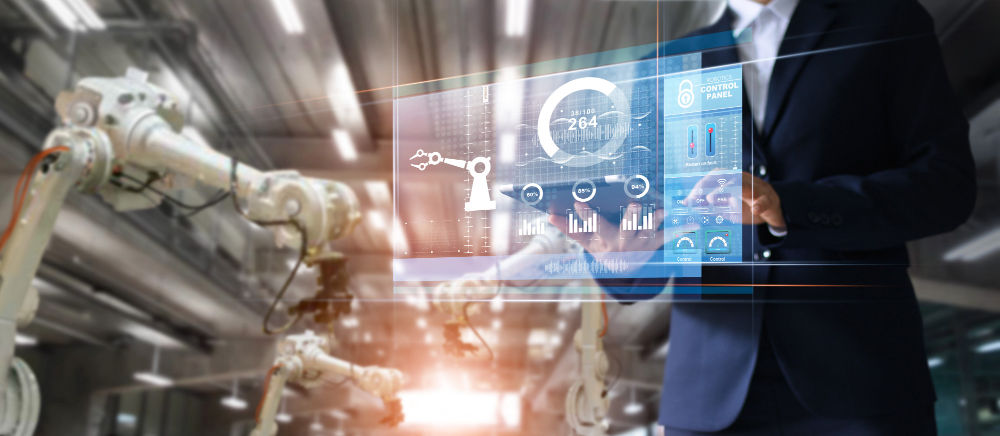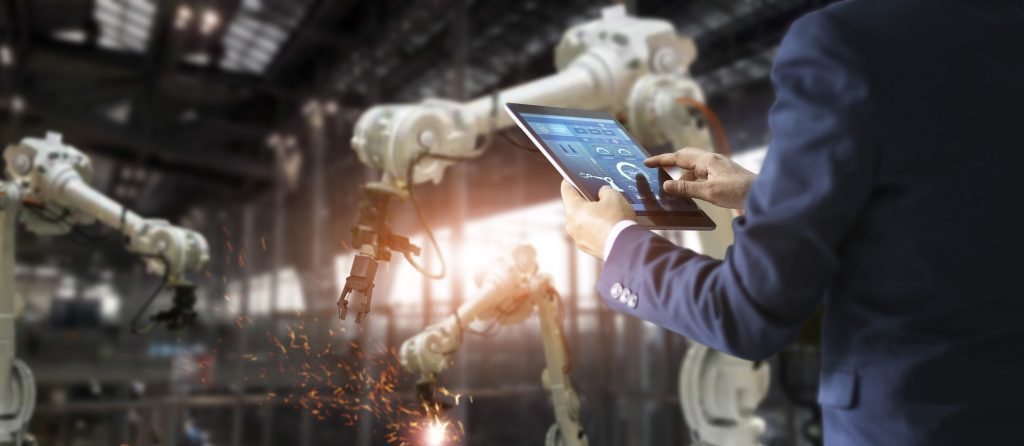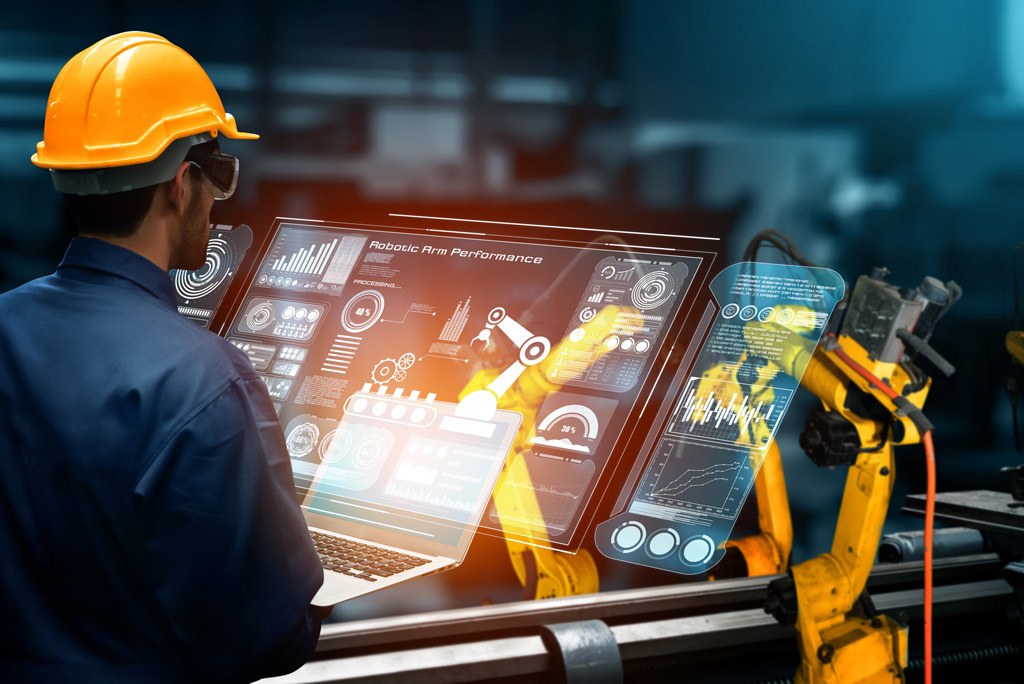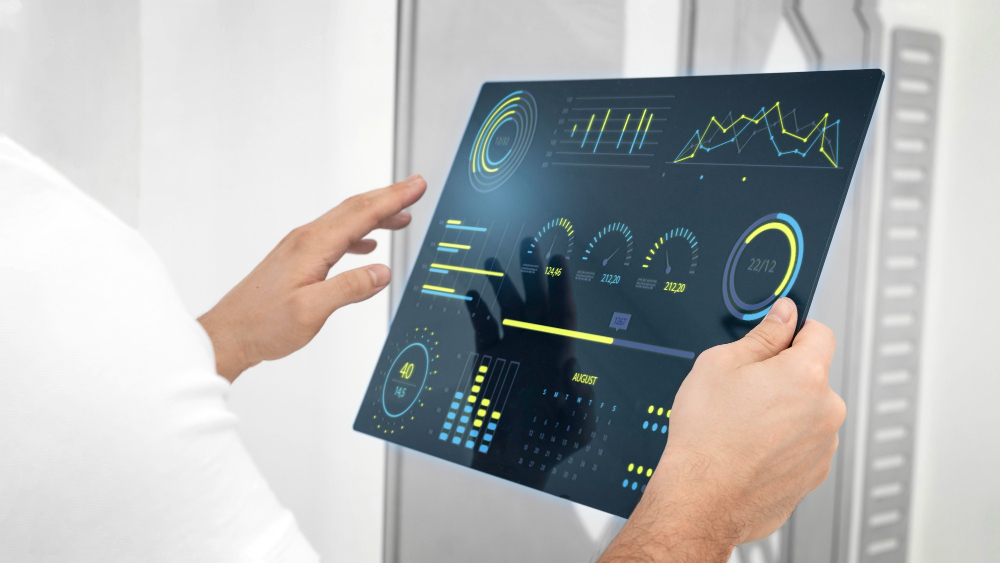
Many business models already leverage technology to expedite and streamline various processes, so why haven’t more companies taken things a step further. Digital technology has made impressive strides over the past decade and continues to advance at an astonishing rate, opening the door to hyperautomation, which can save billions of dollars each year.
Gartner coined the phrase and remains the foremost authority on the subject. Hyperautomation by Gartner represents a step into the future for most industries and a path toward a balance between productivity and efficiency.
What Is Hyperautomation?
A succinct hyperautomation definition is the use of technology for maximum business process automation. This vague notion sounds wonderfully efficient, and possibly something out of a dreamscape. Perhaps a more thorough definition will provide clarity and demonstrate how hyper automation can become a lucrative reality. Hyperautomation is a method that leverages technology to maximize the automation of business processes with the goal of digital acceleration with increased resilience, scalability, and savings. Multiple technologies, tools, and platforms work in sync to automate every possible business process, including:
Event-driven software architecture
Additional automated process, task, and decision-making tools
Low-code/no-code tools
Packaged software
Machine learning
Business process management (BPM) and intelligent business process management suites
Robotic process automation (RPA)
Integration platform as a service (iPaaS)
Artificial Intelligence (AI)
These constructs create a more efficient system that translates to significant savings of time and money. Imagine what daily operations could look like if a company applied these resources to everything from inventory control to social media.
What is Robotic Process Automation (RPA)?
Robotic Process Automation is specific software that uses robots to manage other systems and software. Robot technology simulates human actions, but it’s faster and more consistent than people.
RPA is a key aspect of hyper automation and Gartner notes that it is a fundamental step for many businesses seeking to establish more efficient systems. By shifting mundane, high-volume tasks off employees and onto robot software, companies can increase efficiency and productivity.
This shift also increases employee engagement and satisfaction by removing dull, time-consuming tasks from human employees who can devote more time to more important and fulfilling operational needs. Skilled staff no longer need to manage tedious jobs, like inventory levels and shipment tracking, meaning they can leverage the skills that landed them the job in the first place.


What is Intelligent Automation (IA)?
Intelligent automation is a comprehensive term for a trio of automation technologies that allow organizations to streamline and scale their decision-making processes. The trifecta of powerful cognitive technologies includes:
- Business process management (BPM), sometimes referred to as business workflow automation. It reimagines existing workflow into more efficient processes.
- Robotic process automation, as noted above, takes over mundane, high-volume tasks to free employees for more complex and skilled tasks.
- Artificial intelligence (AI) is the most important of the three because it drives everything forward. AI technology quickly analyzes data to establish a reliable and relevant pool of data to use for making predictions.
Combining these cutting-edge technologies is fundamental to hyperautomation as Gartner describes it. Intelligent automation increases accuracy, output, and compliance while alleviating stress on employees. It provides businesses with a cost-effective way to safely and efficiently scale.
Hyperautomation Compared To:
Intelligent Automation
Intelligent automation offers a more comprehensive approach than RPA alone, however, it still only addresses a fraction of the tasks a business can reasonably automate. Remember, part of the hyperautomation definition is that a business automates as many tasks as possible. That approach involves continually seeking new opportunities to refine processes to achieve maximum automation.
Think of intelligent automation as a cornerstone of hyperautomation, meaning that an organization can implement IA but still has room to further expand automation within the business model. IA can serve as a starting point for hyperautomation, but at some point, businesses must embrace additional technologies and products to reach maximum automation.
RPA
Hyper automation as Gartner depicts it is a comprehensive system that handles a range of tasks, including simple and complex work. RPA represents one technological cog in the multifaceted hyperautomation system.
As a component of functional hyper automation technology, RPA is strictly dedicated to simplistic, routine tasks and used in conjunction with several other products. For a business to truly automate every possible task, solely relying on RPA technology is insufficient because it only addresses a specific section of tasks.
A Bit of History of Hyperautomation: From RPA to Intelligent Automation to Hyperautomation
Hyperautomation would not exist if not for RPA and Intelligent Automation, and not solely because the latter two contribute to the former. RPA was a precursor for IA, which led to the emergence of hyper automation by Gartner.
RPA didn’t enter the mainstream until 2015, but the concept has roots dating back to the 1960s. Machine learning, a branch of artificial intelligence, became a source of interest during the 1960s but progressed slowly for some thirty years. During the 1990s, a few breakthroughs led to significant advancements, like RPA systems extracting data from images and PDFs.The experimentation eventually yielded the earliest concepts for RPA software in the early 2000s.
Robotic process automation exploded during the mid-2000s and started the trend toward automation, including the development of AI technology. It didn’t take long for tech firms and developers to realize that they could blend software and tools, like AI and BPM to create more efficient processes. The first IA arrived by 2018, with heavy reliance on RPA tools.
While it took years to gain viability and traction, RPA and IA have grown exponentially in less than a decade. The RPA industry reached the $1.58 billion mark in 2020 and is poised to grow more than 30% by 2027.
The evolution of RPA to IA laid the footwork for hyperautomation as Gartner defined it in 2019. This multifaceted system continues to evolve as businesses, tech firms, and software developers discover new ways to improve existing tools.


How Does Hyperautomation Work?
Hyperautomation is more than task automation. It’s a revolutionary way to cost-effectively scale a business by leveraging several technologies to refine workloads and processes for maximum efficiency. Hyperautomation by Gartner standards is the present and future of technology in the business world. It represents everything technology can be, a symphony of products and platforms working in unison for a common goal.
Hyperautomation, by definition, uses multiple products, platforms, and tools to create a balanced and efficient system to automate all possible tasks. It focuses on process and crafting a unique system that works to sustain the business, meaning a multi-step implementation.
To help businesses determine parameters for hyperautomation, Gartner devised the digital twin approach. Basically, the business creates a virtual model of existing organizational processes and how they currently work.
Using mining and task mining tools, it’s possible to manipulate the virtual construct to identify and experiment with various applications to see how the automation would play out in real life. The business can also identify potential issues or opportunities for further automation at each step.
What Are the Benefits of Hyperautomation?
Businesses stand to reap significant benefits from embracing hyperautomation technology.
What Are the Challenges of Hyperautomation?
Every technological system has drawbacks, including hyperautomation, meaning businesses should be prepared to work around the challenges.
It is a Complex System
Implementing multiple automation programs is the foundation of hyperautomation, meaning that it is a complex system by definition. While the technologies complement each other, it takes time and knowledge to get everything in place, not the easiest feat for several reasons.
First, the organization needs to have a comprehensive list of all business processes, which isn’t always readily available. It takes time to create that database, and then additional steps to determine what processes to address first. If teams don’t agree on processes or where to begin, it can delay a start date.
Further, there is no one-size-fits-all approach, even within a single industry. Balancing production needs with customer and employee satisfaction adds multiple layers of complex parameters that aren’t easy to reduce to robotic understanding.
Artificial Intelligence Isn’t Infallible
AI seems to improve by leaps and bounds, with experts outdoing themselves year after year. Of course, the advancements spawned a variety of potential challenges for organizations hoping to implement the technology to their benefit.
Some of the top concerns with AI technology include privacy issues and innate biases in the systems. Since most companies don’t design their own AI technology, they outsource to experienced development teams. Those teams require realistic data to build and test programs, meaning there’s a risk of leaking personal data or having inaccurate training systems.
Further, all AI systems have some ingrained biases in their algorithms. Those incorrect or inaccurate assumptions can impact the entire system and delay or prevent optimal efficiency.
What Industries Are Ideal for Hyperautomation?
Though hyperautomation can benefit most, if not all, industries, some innately lend themselves to the multi-modal approach. Businesses in the following industries should already have some automation technology in place and strongly consider leaping into more in the near future.
Finance and Banking
The finance industry was one of the first to embrace automation technology. Not only does the banking system benefit from automation technology, but all aspects of the financial world remained ahead of the curve when the COVID-19 pandemic effectively shut down brick and mortar sites.
From mobile check deposits to electronic funds transfers, banking institutions have improved the customer experience, while alleviating stress on physical sites. Customers can make deposits, transfer money, and pay bills from the comfort of their homes, on the road, or while at work. That’s just one example of financial institutions leveraging automation technology to improve their business processes.
Banks can also automate reporting processes to increase data quality, meet all legal regulations, and allow human workers to focus on more important jobs, including customer service.
Take automation a step further and consider the use of AI algorithms in these circumstances:
- Predict stock movement and encourage investments.
- Streamline lending processes by collecting and evaluating loan data in real-time to improve efficiency and accuracy.
- Supporting customer service requests by allowing AI systems to handle low-level issues.
Finally, the banking industry can ramp up marketing efforts to target appropriate customers. Manual marketing is time-consuming and tedious for many financial employees, and it’s a task that’s easily automated. Plus, it’s faster and easier to reach more potential customers resulting in more legitimate leads.
Healthcare
Healthcare is another industry primed for hyperautomation, meaning it’s already started the process. One of the first steps involved automating the pharmaceutical industry to improve the patient experience, lighten the load on pharmacy workers and alleviate strain on supply chains. The transition involved everything from bulk ordering to automated patient notifications, resulting in more efficient and standardized processes with fewer errors.
Shift gears to medical professionals handling patient care and how hyperautomation improves the efficiency as well as diagnostics and treatment. Leveraging automation tools makes documentation faster and easier for everyone involved, reducing the chances of missing a key piece of information that could alter a patient’s life.
Making everything accessible in real-time leads improves the patient experience, diagnostician’s assessment, and coding accuracy for billing purposes. Automation technology is an efficient and cost-effective way to give every patient the optimal experience, but it also ensures compliance and could ultimately be the route to lower the overall costs of healthcare.
Insurance
The insurance industry is as complex as it gets with a plethora of paperwork for everyone involved at every stage of the process. Regardless of insurance type, it’s beneficial to automate several stages in the process to achieve more accurate results and reduce operating costs.
Automating estimates and quotes leads to more accurate and consistent numbers while freeing employees to handle more important tasks, like customer interactions. Leveraging automated tools and advanced analytics significantly reduces the impact of human error, especially with access to independent sources, like sensors and geographical data.
For example, consider an auto insurance claim for a collision. Intelligent automation can recognize images from accidents, scan license plates, and assess damage to verify the legitimacy, organize files, and store paperwork for all parties, resulting in faster, more accurate quotes.
These tools can reduce insurance fraud and expedite the process so agencies can limit the amount of time it takes to complete a claim and increase customer satisfaction.
BPO and Customer Service
Call centers field thousands of calls every day, but only a fraction require human assistance. Many tasks take a few moments and require simple solutions that AI can easily handle. Implementing automation technology can reduce hold time, which increases customer satisfaction and call center efficiency.
With AI fielding the simplest calls, human representatives can manage the more complex issues that require more time and effort. Plus, without the need to rush a call, human reps can commit the requisite time to satisfy the customer and find a viable solution.
The entire system works seamlessly to filter calls and resolve simplistic issues to reduce call volume for human representatives, which reduces burnout. Hyperautomation also allows companies to handle more inbound calls by resolving more of them without escalation, resulting in increased customer retention.
Tourism and Hospitality
Few industries rely on the internet as much as the travel and tourism sector, so it’s no surprise that hyperautomation promises significant benefits to the industry. Though tourism and hospitality is traditionally a people-centric industry, booking transportation, lodging, and admissions to attractions is almost entirely done digitally today.
Aside from arranging trips, automation technology improves marketing efforts and access to accurate, comprehensive data. Businesses can target legitimate leads for increased conversion rates, while cross-selling and upselling.
Further, as people travel abroad more than ever, language translation technology is more critical than ever. Airports often utilize translation systems to support foreigners who can’t speak the language but need to find transfers, transportation, and accommodations.
Retail
Over 230 million Americans shopped online in 2021. While COVID-19 likely contributed to that number, the pre-pandemic numbers were well over 200 million since at least 2016. Automation technology can help retail businesses capitalize on this trend by providing new ways to recreate a customized shopping experience online.
Collecting data to customize suggestions and marketing materials is one potential use, but not the only opportunity. Automating payments, inventory, and risk management can reduce costs and alleviate stress on already overextended retail workers.
Finally, retail operations can benefit from AI support for pricing. Complex analytics and cost comparisons can help companies identify and implement more lucrative pricing strategies that increase revenue without deterring customers.
What Processes Are Ideal for Hyperautomation? (Automate any business process end to end)
Hyper automation, as Gartner explains, involves automating every possible business process at each stage and level. Some tasks are more amenable to automation than others, and others require multiple approaches to capitalize on automation.
Financials might be the best place to start automation because it’s cost-effective and increases efficiency in those departments. From expense reports to tax documents, automation can reduce the impact of human error and provide real-time data on trends so that management can make better financial decisions.
Payroll tasks occur on a set schedule, making them ideal for automation. Starting with tracking time and pay rate, accounting teams can skip the manual drudgery with automation technology. Aside from digital time clocks, it’s possible to deposit paychecks, pay contractors, and track tax records with automation tools.
Hyperautomation technology can massively impact a human resources department. Automating onboarding and offboarding is a significant time investment for HR teams, and it’s completely unnecessary. Most paperwork and information sharing for both processes can shift to automation tools that handle a significant part of the process.
Automation technology reduces errors that can impact payroll, leave time, and promotions while providing insight into staffing numbers and patterns. Many platforms provide various reports to assist HR and management teams in making better staffing decisions. It also makes the experience more pleasant for everyone involved.
Additionally, hyperautomation in the HR department creates clearer guidelines and provides better, bias-free performance tracking. Automation essentially removes human prejudices from determinations of promotions, disciplinary action, and other crucial staffing decisions.
Customer service management is critical for every business. From managing customer information to handling satisfaction and retention, automation tools can be a gamechanger.
- Chatbots allow AI to filter incoming queries and escalate only those issues they can’t resolve.
- Recording conversations can support employees and improve overall customer service.
- Processing incoming emails and sending automated responses lets customers know their emails were received.
- AI can monitor social media and trigger alerts for certain parameters so that human employees can address them.
- Customer portals might be one of the most beneficial options for education and support.
Finally, customer relationship management (CRM) systems allow companies to automate sales, marketing, and customer service with a few clicks. It makes customer service teams more efficient, provides relevant, real-time data, and increases customer engagement.
Tracking shipments, managing inventory numbers, and filling orders take less time and resources when companies employ automation tools. Reducing inventory and order errors is just one cost-saving benefit to automating this department as much as possible.
When teams can access real-time numbers, they can plan for shortfalls and overstocks or make adjustments to prevent lost revenue. Additionally, automating inventory control streamlines the process to move goods faster and more efficiently.
Automation tools can change the face of marketing by spreading the message across multiple platforms, reaching the target audience, and improving conversion rates. Automated emails are one of the most common uses of intelligent automation in businesses. For example, it’s easy to set up hundreds or thousands of emails months in advance to follow an established promotional campaign.
Social media and blogging are critical components of marketing and branding for many companies. Instead of manually entering posts and submitting blogs at set times, teams can automate everything. In this case, hyperautomation increases consistency and reduces the chance of mistiming a critical post or campaign.
Additionally, AI models and analytics can improve search engine optimization (SEO) efforts to revolutionize digital marketing and website performance. It also frees a marketing team to commit more time to more valuable tasks, like crafting new campaigns or sourcing new materials.
Real-world Examples of Companies that Implemented Hyperautomation
Though hyperautomation is a relatively new concept, it’s not unproven. To demonstrate the effectiveness of invoking multiple automation tools, here are three success stories.
Verizon
Verizon utilizes hyperautomation, meaning the company utilizes AI technology and other automation tools to support employees and meet customer service needs. The company doesn’t provide details about all products they use but highlights the efficacy of AI customer service chatbots to answer questions and address customer concerns.
The company notes that the chatbots provide balance and reduce the strain on human agents and keep labor costs down. Verizon also reports that this approach improved their customer satisfaction and employee satisfaction ratings.
Additionally, the company plans to expand its use of automation to streamline more business processes.
Delta
Delta dove headfirst into hyperautomation and became an industry leader. The airline implemented a series of automated processes to improve their customers’ experience and better utilize employees.
- They created the first end-to-end biometric terminal in the US to safely and securely expedite check-in via facial recognition.
- Use real-time RFID bag tracking to provide customers with push notifications on the status of their luggage.
- Automatic check-in allows customers to check in through the app and access their boarding passes virtually instead of waiting in line to secure a paper ticket.
The airline also utilizes automated technology to support employees at every stage of the process.
GE Aviation
GE Aviation upped its game by using the digital twin approach to craft airline engines. The company created virtual replicas of its aircraft engines using Microsoft’s Azure Digital Twin solution. Using the digital models, the engineering team runs tests to see how they perform and predict issues before building them.
Employees run multiple simulations on each engine to craft detailed diagnostics and characteristics about what each one can reasonably accomplish. Plus, the team continues monitoring the engines via sensors on the control unit to keep real-time data to feed into predictive models.
GE Aviation can alert customers when an engine needs service and what’s necessary so they can optimize each machine’s performance and longevity. These multi-tiered approaches reduce costs and improve product safety.
What Technologies and Tools Contribute to the Rise of Hyperautomation?
Hyperautomation, by definition, relies on multiple technologies, tools, and platforms to achieve maximum efficiency. While it’s impossible to credit every potential influence and available tool, these are most commonly associated with the method.
- Artificial Intelligence (AI)
- Machine Learning (ML)
- Robotic Process Automation (RPA)
- Advanced Analytics
- Natural Language Processing (NLP)
- Optical Character Recognition (OCR)
- Digital Twin of an Organization (DTO)
- Low-Code/No-Code Platforms
Artificial intelligence might be the most influential aspect of automation technology because it’s the foundation for visual perception, speech recognition, decision-making, and language translation. AI provides robots with the ability to interpret a piece of data and formulate a viable response or comb through a mountain of information to make detailed and accurate predictions.
It’s essentially the foundation for most advanced automation technology. AI also has room to grow and evolve further to maximize our opportunities to leverage the tech for more mundane and mid-level tasks so that humans can divert their focus to managing and solving more complex issues.
Artificial intelligence is not intended to replace human employees, it’s meant to supplement them and alleviate some of the work. While AI has some issues, like innate biases, developers are actively working to close gaps and resolve them.
Machine learning is a subset of artificial intelligence that is integral to hyperautomation. It’s the primary source behind many aspects of our daily life, including everything from chatbots to customized Netflix suggestions.
This programming contributes heavily to many AI features and drives the tech’s forward progress because it is the programming that allows computers to learn self-programming based on data and experience. Machine learning can take three unique approaches to data:
- Descriptive, meaning the computer analyzes the data to describe an occurrence or result.
- Predictive use involves analyzing information to create predictions about future trends.
- Prescriptive machine learning means using the information to determine the proper course of action.
Additionally, machine learning can be supervised by models with data labeled by humans, unsupervised where the machine seeks patterns on its own, or reinforcement learning that trains machines using trial and error and reward systems. Each approach and method has multiple applications in hyperautomation depending on what the company hopes to achieve.
AI and machine learning represent the future of business, and many companies already embraced the trend with 76% of enterprises committed to machine learning and AI in 2021.
If AI and machine learning represent the foundation of hyperautomation tools, robotic process automation is one of the first tools most businesses should embrace. It’s typically easy to implement by installing software, and it can save significant time and money.
As previously noted, RPA is the programming of robots and software to perform simple, repetitive, high-volume tasks. It covers the most time-consuming and tedious jobs that a business needs to function but frustrates employees handling them. Using RPA software releases those employees to focus on more complex and fulfilling tasks. Not only does it reduce overall costs, but it also decreases incidents of human error and employee burnout.
Advanced analytics refers to the automatic analysis of data to identify deeper values, predict trends, and offer recommendations. The approach relies on AI to delve deeper into information to find patterns and perform extensive analyses, including processing complex events and simulations.
A key benefit to using advanced analytics is the sheer amount of data these programs can process. Algorithms can analyze, separate, and collate information to find various connections, patterns, and more without human intervention, meaning it can keep churning out the desired information constantly.
Using automated analytics can help companies in several ways, including simplifying overwhelming amounts of data into usable content, running virtual simulations to identify issues, and finding new ways to streamline business processes.
Natural language processing is another branch of AI that focuses on language, specifically how computers understand and interpret human language. NLP allows computers and humans to interact without using traditional codes, like Java.
These systems aren’t perfect and generally won’t suffice for more than rote conversations, but NLP is an evolving system that leverages machine learning and AI techniques. NLP is used for automated phone systems and can filter calls to relieve stress on call centers and customer service representatives.
Optical character recognition is a type of AI that helps computers to recognize numbers and letters, allowing machines to read documents. This software can transfer paper documents into text that machines can read, convert files from one format to another, and even assist blind and visually impaired individuals.
This software reduces costs and improves workflows by streamlining data entry and document storage while providing staff with the most updated information. It also allows companies to secure and back up data.
A digital twin of an organization is a virtual model that replicates all operational processes and related data to assess how the business might react to different variables. Typically, a company uses a DTO to identify areas for improvement and test possible solutions to find the best outcome.
The DTO model can be applied to parts of organizations, like product designs, to test them individually and in unique situations. DTO software can reduce costs by playing out trial and error virtually, making it ideal for budget-breaking projects.
Low code tools and no-code (scriptless) options use AI to automate some coding so that users can drag and drop elements. These platforms make it possible for people with limited coding experience to successfully construct a functional application. Additionally, the approach supports professionals by handling the mundane aspects of coding so they can focus on more complex programming.
How to Get Started with Hyperautomation
Hyperautomation is the present and future for most businesses because it allows people to work smarter. The impact on the bottom line cannot be understated, but that doesn’t mean the path to hyperautomation is without effort. As with any new system, there will be growing pains as employees and management shift daily tasks to align with new goals. While every company’s system will look different, the general pathway to hyperautomation follows the same trajectory. Gartner put forth a three-step process to achieve hyperautomation, though each one involves multiple actions.
1. Standardize Systems and Processes
Recall that part of hyperautomation involves outlining every business process, including those that currently lack written guidelines. This step requires time and patience to detail current business processes, including who performs the tasks and what equipment they use. It’s the foundation of the process and the only way to reach optimal efficiency.
Outlining each process is only part of the first phase. It’s necessary to standardize each process so that everyone follows the same steps. Many companies will notice inefficiencies in current processes, partially due to inconsistent application of existing methods. At this point, it’s possible to identify best practices and initial opportunities for automation with software.
Note that this step might require shifting or terminating some staff to accommodate the initial shift toward automation. Ultimately, this step should yield more efficient use of time and fewer employees managing more operations.
2. Remotely Manage and Control Operations
Factoring in remote management further reduces overhead costs by allowing employees and management to handle operations from a dashboard. Digital Twin of Operation (DTO) and Internet of Things (IoT) models offer exceptional support and opportunity for businesses entering this phase of hyperautomation.
Since automation provides real-time information and the internet provides remote access, teams can react to issues or shift gears from almost anywhere. It takes fewer people to manage operations and requires less face time, which has the side effect of creating safer workspaces for employees in hazardous industries, like mines and oil refineries.
Remote control also allows management to keep a pulse on daily operations, an especially helpful tool for companies with assets spread across multiple locations. Further, remote management provides more flexibility to move operations if necessary.
Some of the initial applications show remote management supporting warehouses, power plants, and farms by allowing them to manage drones and other robotic systems as they carry out tasks in the field. However, the potential applications are infinite with more industries discovering ways to leverage remote management to streamline and expedite services.
This phase could produce more challenges than the previous one because it requires more complicated software and tools. Businesses need the knowledge and space to accommodate the tech-heavy support necessary to implement remote management. Additionally, it could lead to more employee lay-offs followed by a need to hire different specialists with the skills to handle the new operations.
3. Semi-Automation to Full Automation
Finally, organizations can take steps to reach their full automation potential. Investing in robots and intelligent operational systems to support processes and physical facilities across the organization takes time.
This phase involves drawing on a range of tools, platforms, and software to fine-tune operations and automate any remaining tasks. It often involves more reliance on AI and machine learning to increase performance.
The ultimate impact comes from reduced investments in new projects and quicker start-ups because automation allows teams to tackle projects faster and more efficiently. It’s possible to trigger operations sooner because all members have access to the requisite information and tools almost immediately instead of waiting for them to arrive. The seamless coordination means less prep time on the front end.
Operations get a running start, but they also manage obstacles faster and easier thanks to the AI and machine learning systems in place. Predictive technology can recognize potential problems in advance and allows teams to adapt faster than ever.
Full automation is not without its challenges, but the benefits far outweigh the drawbacks. Still, understanding that this stage requires specialized employees with the skills to manage equipment. Repairs, updates, and upgrades pose additional costs, and components are always affordable or readily available. Additionally, there are some challenges involved with displacing human employees, including legal and political blowback.

Hyperautomation Services from ZAPTEST
ZAPTEST has worked closely with Gartner to develop full-stack software testing and RPA tools to support companies in their pursuit of hyperautomation. The enterprise level tools can automate any platform like Linux, Windows, Android, iOS, web, and conduct a variety of tests from load tests, performance tests, UI tests, QA tests, to complex regression testing, unit tests, functional tests, integration testing, UI tests, complex API tests, and many more. Moreover, companies don’t need to hire or train a specialist because ZAPTEST doesn’t require coding or software development skills. Moreover, a ZAP expert is available 24/7 remotely to support the organisation as part of its team.
The tool is easy to implement and integrates seamlessly cross-platform and cross-application, so there’s no need to reconfigure applications or handle multiple scripts for different devices.
FAQs
Best Hyperautomation Videos to Watch
The best hyperautomation videos to elucidate on the concept, purposes, and applications are:
- Hyperautomation: Automate. Survive. Thrive. 1 minute
- Hyperautomation and the RPA Renaissance 3 minutes
- What Is Hyperautomation? 13 minutes
- What is Hyperautomation? The Secret Behind Self-Improving Bots 35 minutes
- Key tips for business hyperautomation with RPA and SAP 50 minutes
What Are the Most Important Hyperautomation Technologies?
The most important hyperautomation technologies are:
- Artificial intelligence
- Machine learning
- Robotic process automation
- Advanced analytics
What Is the Market Size for Hyperautomation?
The global market size for hyperautomation was $481.6 billion in 2020, and research shows it should reach $532.4 billion by the end of 2022.
What Is the Best Hyperautomation Tool?
What Are the Best Hyperautomation Courses?
The best online courses on automated processes are:
What Are the Best Hyperautomation Books?
Pick up one of these comprehensive reads to learn more about hyperautomation.
- Hyperautomation by Matt Calkins
- Intelligent Automation: Welcome to the World of Hyperautomation by Bornet
- Intelligent Automation and Systems Engineering by Springer
What Are the Pros and Cons of Hyperautomation?
The pros of hyperautomation include:
- Increases productivity and efficiency
- Reduces labor costs
- Improves employee and customer experience
- Improves quality of work
The cons of hyperautomation include:
- Program biases
- Data privacy leaks
- System complexity and required training
What Are the Best Hyperautomation Tools?
The best free hyperautomation tools are as follows:
- ZAPTEST
- Digital twins
- Artificial intelligence
- Robot process automation
Hyperautomation Definition
Hyperautomation is a business-driven approach to identifying and optimizing all business processes with multiple automated technologies and tools.
Why Use Hyperautomation?
Hyperautomation reduces costs while increasing efficiency, productivity, and quality. It also leads to increased customer and employee satisfaction.
How to Learn Hyperautomation
You can learn automation through resources like this article, or other educational tools, like videos, books, or hyperautomation courses.
Who Invented the Term Hyperautomation?
The term hyperautomation was coined by none other than the research firm Gartner. The firm reports that hyper automation is currently the most successful modern business strategy.





